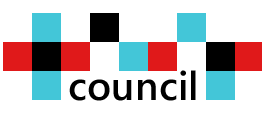When did you hear first of IoT? In what context was that?
I first learned about IoT in 2004 while considering to draft a communication on RFID at European Commission’s DG CNECT. The phrase caught my mind during discussions with academia (ETH Zürich, Auto-ID Center) and industry (SAP, ie “sense and respond », EPCglobal). A 1-year series of consultations on RFID was launched by Viviane Reding on 9 March 2006, which led to an EC Communication on 15 March 2007, in which the final paragraph was the following:
“The Commission will continue to closely monitor the move towards the “Internet of Things”, of which RFID is expected to be an important element. At the end of 2008, the Commission will publish a Communication analysing the nature and the effects of these developments, with particular attention to the issues of privacy, trust and governance. It will assess policy options, including whether it is necessary to propose further legislative steps to both safeguard data protection and privacy and address other public policy objectives.”
In the meanwhile, I had read the UN/ITU report on IoT (see Lara Srivastava’s input), which had a strong impact on my commitment to pursuing public discussions and designing EU actions on IoT.
Did you think it was big then or just another technology?
My intuition in 2004/2005 was that RFID, which kept me busy during 5 years (2005-2009), was just the doorstep and threshold to something “big” named the internet of things. I always thought it would be not just another Internet technology but a deep revolution in tech, applications, and human-object relationships. I was them impressed by the work of thought-leaders like Bruce Sterling and Julian Bleecker who presented complementary clear and thrilling visions of the IoT.
What were your dreams, hopes for it once you realized how big it was going to be?
I considered first of all the risks of IoT for humans and society. Though covering a broad scope of topics, my initial work on RFID was focused on data protection, privacy and security. This concern led to the introduction of “IoT ethics” as part of the discussions within the RFID Expert Group that worked on an IoT Recommendation in 2010/2012. (It was the first time ethics was given such a big place in EC’s reflections on digital tech.) I also encouraged the group to discuss the relevance and feasibility of a new right, actually the “right to the silence of the chip”, but the idea was dismissed by its majority. But then – poetic return of time? – thanks to my close collaboration with what was at that time DG MARKT and DG ENTR, the concept came back, slightly nuanced, in the 2016 GDPR (the “right to be forgotten »). So, to some extent, work on a doomed IoT Recommendation influenced the way the GDPR was developed, drafted and negotiated.
Rapidly, I became convinced that IoT was a formidable opportunity for the EU economy, the EU society, and later for the planet as a whole (impact on climate, nature, environment, medicine…). Like most new technologies IoT had (still has) an ambivalent dimension – in fact the good or bad coming from it depends on what humans do! Therefore, from 2012/2013 onwards, I strived to balance my own reflections on IoT in a way to consider both its opportunities (incl. for industry and the European economy) and its potential threats/risks.
P.S. We speak of IoT, but I’d like to add that if the phrase was coined by Kevin Ashton in 1999 it has its roots in various original research work, which for me was embodied in the concepts of « Real-time Operating system Nucleus » or TRON (Dr Ken Sakamura, 1984), « Ubiquitus – or Pervasive – Computing » (Mark Weiser, 1988), « Ambient Intelligence » or AmI (Philips and DG INFSO, 1999), and some others (CPS etc.). It is interesting, in this respect, to consider the history of how new concepts are named – for example, AmI had little success beyond the academic community, whereas IoT, first ill-considered by academics and engineers, quickly became a political and media catchword that ensured its long-term success. This is to say that I was always interested in the origins of the IoT – Rob will remember the frequent mention in my speeches of the « Twenty-Fifth Hour » novel by C. Vigil Gheorghiu in 1949! – because even if I accepted the disruptive power of IoT I also wanted to embed it into the long evolution of thinking about digital technologies.
